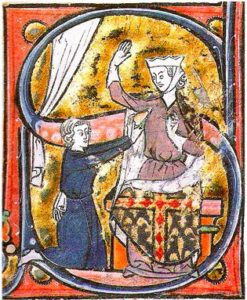[Greek] καρδία (kardia), [Latin] cor: heart; Act.21:34, Act.14:17, Lk.24:32, Mk.7:21, Lk.21:14, Mk.12:30, Lk.16:15

Old Testament: the heart is the “seat” of moral and religious conduct
Background Information:
Old Testament: This term is predominantly depicted in the figurative sense. The figurative sense is considered the innermost part of the person involving the emotional, mental, and spiritual faculties. The heart stands firm in bravery and courage. The heart is the seat of rational functions, given by God. Planning, volition, and will comes from the heart. Religious and moral conduct is rooted in the heart, which allows one to serve God. The heart accepts the divine teachings.
Greek culture: The heart, on the other hand, is primarily viewed in the literal or physiological sense. The figurative sense of the heart, although used infrequently in prose, is utilized by poets. Poets present the heart as the seat of emotions, passions, anger, courage, fear, joy, or sadness. Most of the philosophical schools viewed the heart in a literal sense. However, Stoicism, which held virtue as the highest good, viewed the heart as the seat of reason, feeling, will, and intellectual life.
New Testament: The New Testament also primarily views the heart in a figurative sense, agreeing with the Old Testament. However, the New Testament more strongly views the heart as the main center of spiritual life. The heart is the place in man which God bears witness to Himself.
Scripture:
“Beware that your hearts do not become drowsy from carousing and drunkenness and the anxieties of daily life, and that day catch you by surprise.” Lk. 21:34
This is an example of one of the few times that the heart is referred to in a literal or physiological sense.
“Then they said to each other, ‘Were no your heart burning within us while He spoke to us on the way and opened the scriptures to us?’” Lk.24:32
In the heart dwells feeling, emotions, desires, and passions.
“From within people, from their hearts, come evil thoughts, unchastity, theft, murder, adultery, greed, malice, deceit, licentiousness, envy, blasphemy, arrogance, and folly.” Mk.7:21
The heart is the seat of the will, the source of resolve.
“And He said to them, ‘You justify yourselves in the sight of others, but God knows your hearts; for what is of human esteem is an abomination in the sight of God.’” Lk.16:15
It is in the heart where the religious life is rooted. The heart is where one finds God.

The kneeling lover offers his “heart” to the damsel. (1250’s)
Heart: a symbol of romantic love: The first known depiction of a heart as a symbol of romantic love dates back to the 1250’s. This is depicted in a miniature plate of a kneeling lover offering his “heart” to a damsel. The pinecone anatomically represented the heart in terms of medieval scientific understanding. The kneeling lover offers the pinecone. The point of the pinecone represents the bottom of the heart. So, the kneeling lover offers his heart to the damsel.
Conclusion:
Cardiac, coronary
It is interesting to see how the Old Testament and Judaism’s views differ from the Greeks. It is also interesting to see how the New Testament has a much greater focus than the Old Testament on the importance of the heart. The Greek word sklerocardia means hard-hearted or unyielding. This speaks more of the attitude of a person. Likewise, the Greek word kardiognostes means knower of hearts. God is the knower of hearts. Essentially, God is the preeminent heart specialist.
The heart has become the seat of emotions. Years later, this develops the notion of the heart as the source of love and romance.
